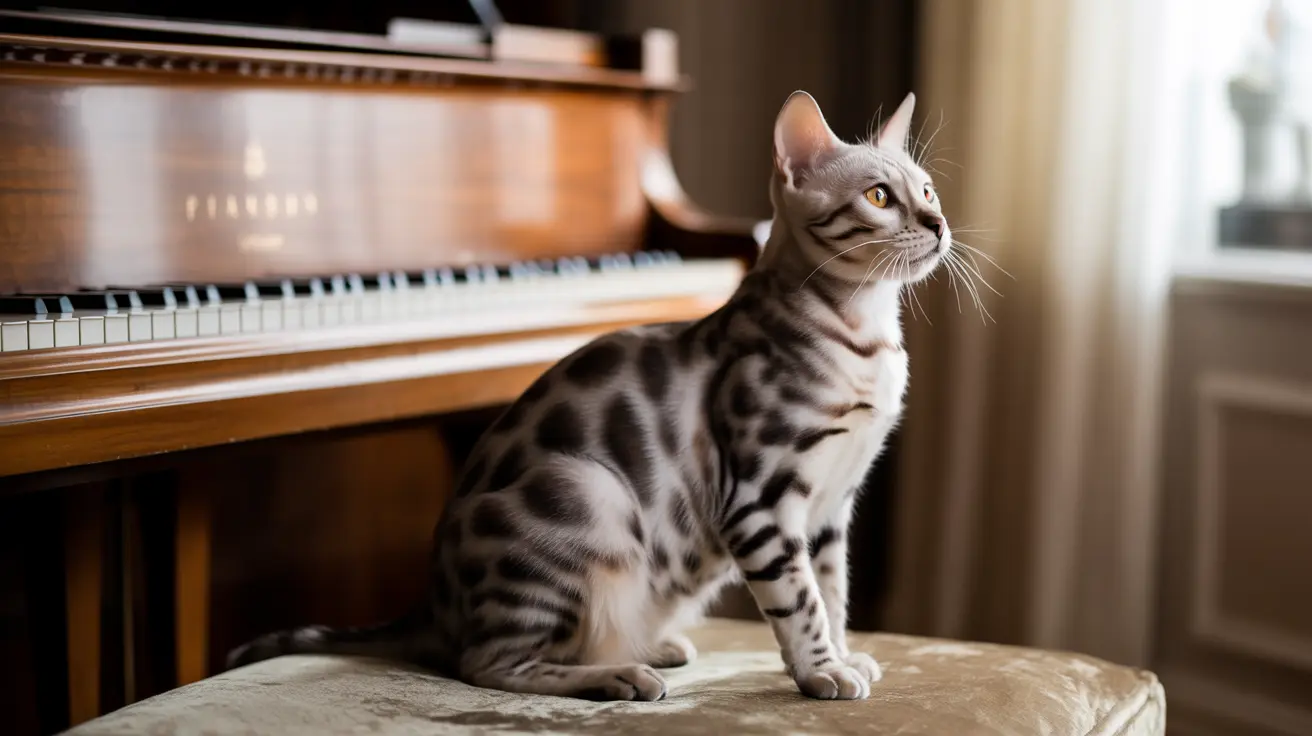The Fascinating Connection Between Cats and Piano Music
The relationship between cats and piano music has long intrigued both pet owners and researchers alike. With their extraordinarily sensitive hearing capabilities - at least three times more acute than humans - cats experience music in ways we can barely imagine. Their ability to detect frequencies up to 64,000 Hz (compared to our modest 20,000 Hz) means they process piano notes and overtones very differently from us.
Recent scientific studies have revealed fascinating insights into how our feline friends respond to various musical styles, including piano music. While individual responses vary significantly, research suggests that certain types of piano music can have calming and enriching effects on cats.
The Science Behind Cats' Musical Perception
Cats possess sophisticated hearing mechanisms that allow them to detect subtle nuances in piano music that humans might miss. Their acute sensitivity to high frequencies means they can pick up on overtones and harmonics that are particularly prevalent in piano compositions.
Research from the University of Wisconsin has shown that while cats can appreciate human music, they show stronger positive responses to species-specific music that mirrors their natural vocal patterns. This includes frequencies similar to purring and the rhythmic patterns of nursing.
How Piano Music Affects Cat Behavior
Studies have documented various ways cats respond to piano music:
- Increased relaxation and purring
- Approaching the source of the music
- Changes in ear position and head orientation
- Reduced stress markers in clinical settings
- Modified breathing rates during exposure to gentle classical pieces
However, it's crucial to note that not all cats react the same way. Some may show obvious signs of enjoyment, while others might appear indifferent or even stressed by certain musical pieces.
Best Piano Music Choices for Cats
When selecting piano music for cats, research suggests considering these factors:
- Tempo: Slower, gentler pieces tend to be more effective
- Volume: Keep it moderate to low, as cats' sensitive hearing can be overwhelmed
- Complexity: Simple, melodic compositions often work better than complex arrangements
- Duration: Start with short sessions to gauge your cat's response
Species-Specific Music and Modern Developments
Composers like David Teie have pioneered "music for cats," incorporating piano elements with frequencies that match feline vocal patterns. These specialized compositions often combine traditional piano melodies with sounds that naturally appeal to cats, such as purring frequencies and bird-like chirps.
Practical Applications of Piano Music for Cats
Piano music can serve several practical purposes in cat care:
- Anxiety reduction during stressful events like thunderstorms
- Behavioral modification in shelter environments
- Post-surgical recovery support
- General environmental enrichment
- Separation anxiety management
Frequently Asked Questions
Do cats generally enjoy listening to piano music or classical tunes?
While individual preferences vary, many cats show positive responses to gentle piano and classical music, particularly pieces with slower tempos and softer dynamics. Scientific studies have demonstrated that classical music can reduce stress markers in cats during various situations.
How can I tell if my cat likes or dislikes piano music?
Watch for signs of enjoyment such as purring, relaxed posture, approaching the music source, or gentle tail movements. Signs of discomfort include ear flattening, hiding, tail swishing, or leaving the room.
What type of piano or classical music is most soothing for cats?
Slow-tempo, melodic pieces with simple arrangements tend to be most soothing. Bach and Handel compositions often work well, while more dramatic or complex pieces might be less effective.
Is there special music composed specifically for cats that includes piano?
Yes, composers like David Teie have created species-specific music that incorporates piano sounds with frequencies and tempos designed to appeal to cats, often mimicking purring and other natural feline sounds.
How should I introduce piano music to my cat to avoid causing stress?
Start with short sessions at low volume, and gradually increase duration based on your cat's response. Choose quiet times of day, and always provide your cat with the option to leave the area if they want to.
Conclusion
While the question "Do cats like piano music?" doesn't have a universal answer, research and observation suggest that many cats can benefit from and enjoy appropriate musical exposure. The key lies in careful selection of pieces, attention to individual preferences, and mindful introduction of music into your cat's environment.






